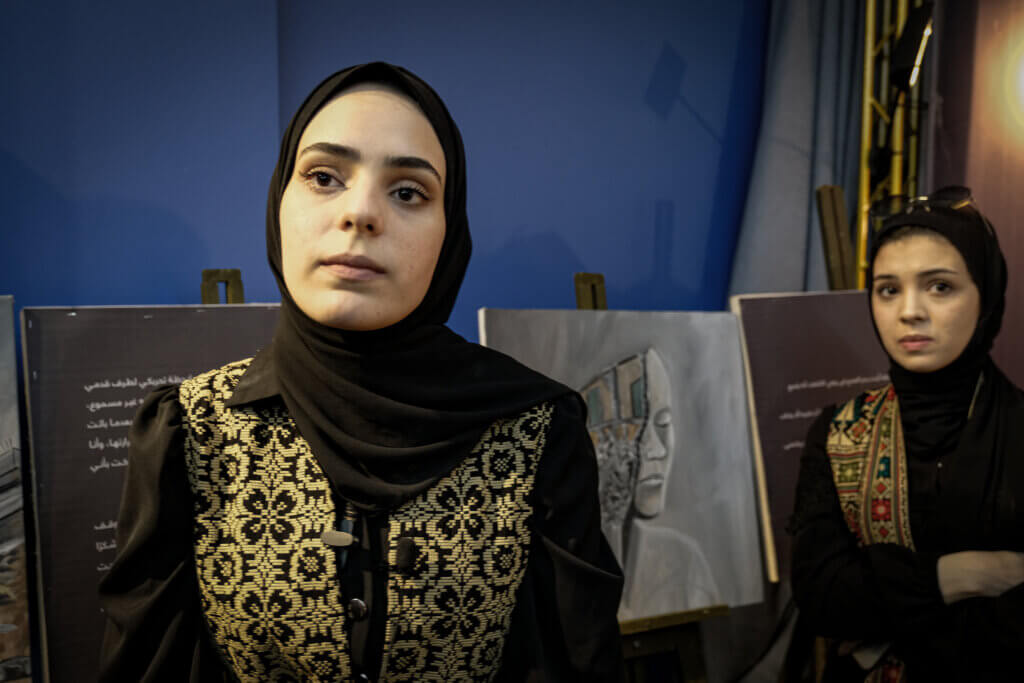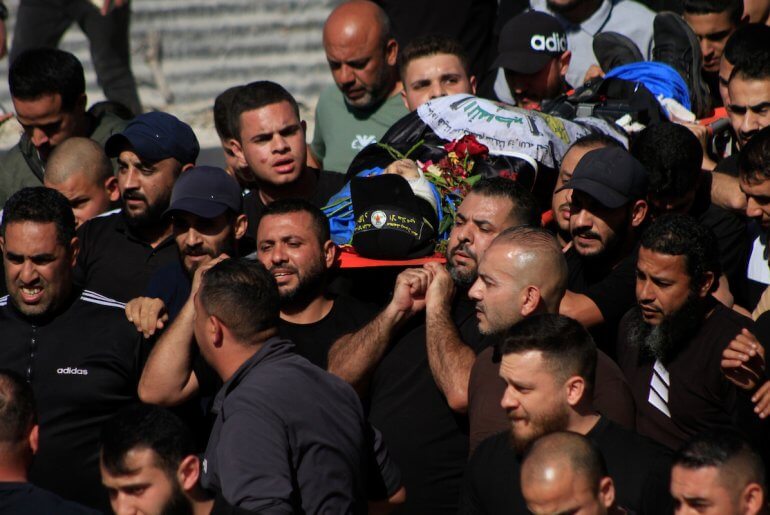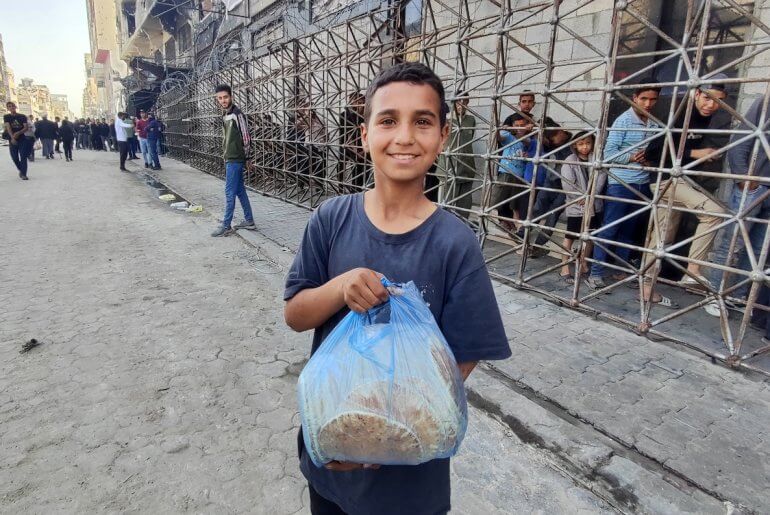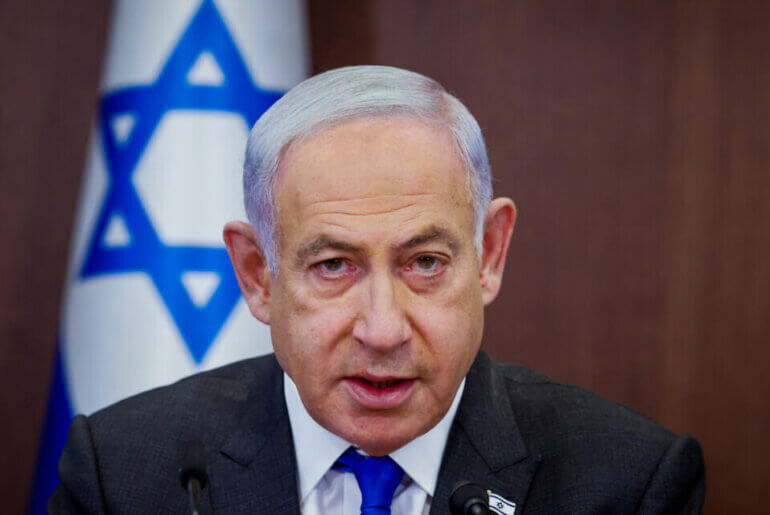Zainab al-Qolaq stands in the middle of her nine paintings, surrounded by people, cameras, and questions from journalists. She moves to the corner, answering in a quick fashion. She seems nervous and insecure, until the moment her father shows up. He puts his arm around her shoulders, and then her eyes stabilize and she gets the power again to proceed.
“It is easy to get rid of the rubble of our home, but the destruction inside my heart, that is impossible to eliminate, I lost 22 members of my family,” al-Qolaq, the 22-year-old survivor of the May 2021 war on Gaza, says. She told her story through the nine paintings she displays on the walls of Euro-Med Human Rights Monitor in Gaza, during a two-day exhibition in May.
“I’m 22 years old, I lost 22 people,” is the title of the exhibition.
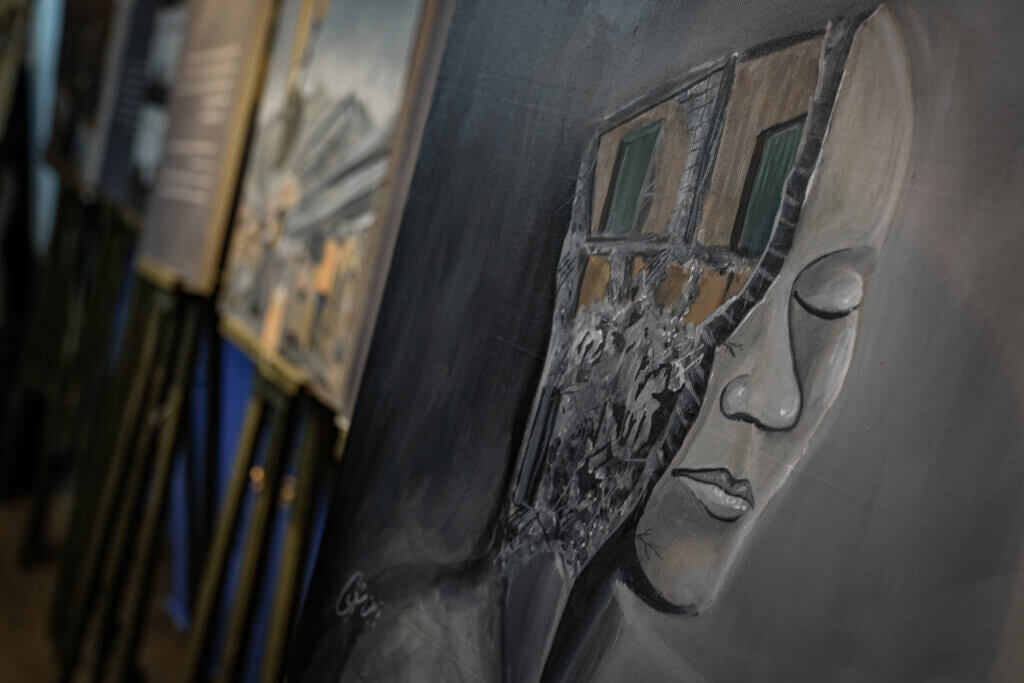
These nine paintings that al-Qolaq produced after the 2021 war look like war trauma. Her home was bombed last war, and she lived beneath the rubble for 12 hours. She wished she had gone unconscious during these hours under the walls and rubble of her home, but she lived every frightening second of them. Eventually, she was rescued only to find that 22 people from her family were gone.
“After I was pulled out, I couldn’t open my eyes. I wasn’t able to understand all that destruction around me,” she said.
“Zainab before the war is a different person than Zainab after the war,” she reflects.
At the exhibition, she moves slowly between paintings and describes how she turned lifeless after the war. Her paintings are dark and frightening, like one which shows two lines of people covered in their white grave shrouds, it is a painting of her family. Another one is of a ghost that looks like death wearing a black robe, At first look you maybe think it’s the death she experienced, but she explains it is a painting of how she felt after the war.
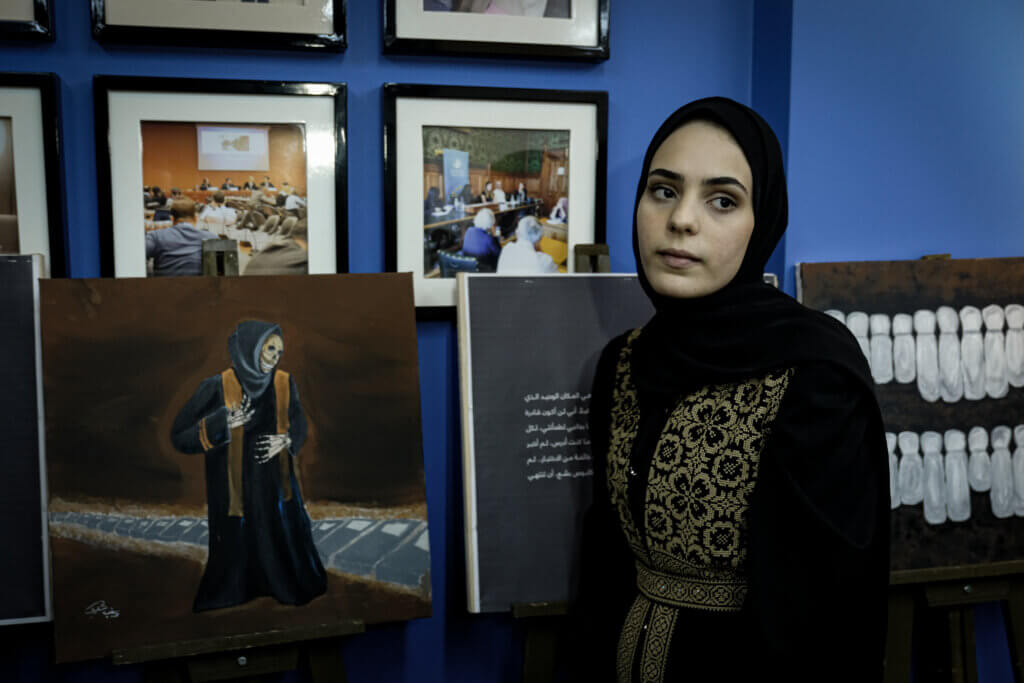
One of the most touching paintings recreates a photo of her family members. They took the photo during the graduation of her eldest brother. She paints the same photo, but with empty outfits for family members who passed away. She only paints the faces of survivors – one of her brothers and her father.
“Clothes scare me, they remind me of my family. People I lost from my family became empty clothes,” she says.

Life before the war
A family of seven members, Zainab, her parents, and her four siblings were happily waiting for her graduation to celebrate. She was a graduate student in the English literature department at the Islamic University of Gaza. Her eldest brother had graduated one year before the war, and she was next. The family was getting ready to celebrate.
“It was a lovely family, we always gathered and preferred to spend our time with the extended family. We are all civilians, and I had no thought that we could be bombed,” she says.
Despite the losses Zainab lived through, she has kept on her path to make her family proud. She passed her exams after the war, and successfully graduated.
She wanted to let her family know that she made it. She went to the cemetery to celebrate her graduation among her family. “I could not imagine that a person could celebrate in a cemetery, but I did because all of my family is there.”
Her life before the war used to be colorful, and her drawings exuded optimism. “I used to draw the sea, gulls, and paintings full of life,” she said.
Before the war, Zainab conducted an interview with a local channel, where she was interviewed as an up-and-coming talented fine artist. Her ambitions and thoughts reflected a young woman who had discovered her talent with art recently in college. She was full of life, and her smile was spontaneous.
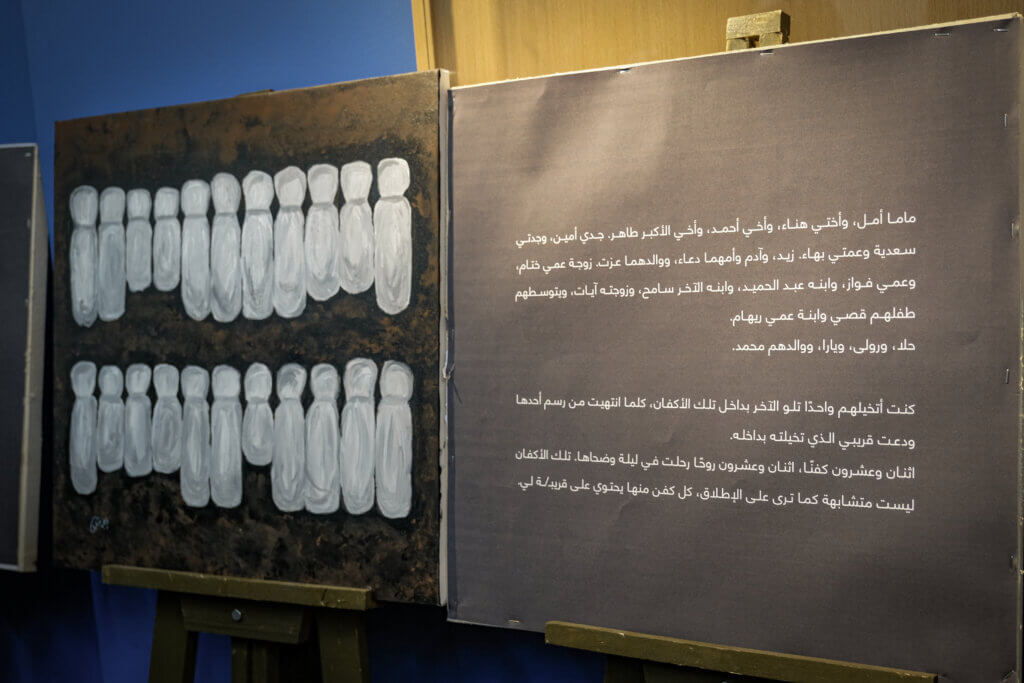
Beneath the Rubble
It was 1:00 o’clock in the morning, Zainab was sleeping when her mother woke her up and they both were wondering what was going on.
“The sound was terrifying; walls were cracking, the building was swaying. We could not even think before we all fell down,” Zainab recalls the moment her home was bombed.
“Twelve hours of thinking and asking myself, are the rest of my family okay? Who is awake, who has passed away, who is screaming? I was wondering who’s still alive. I kept telling myself that I’m still here, they must be trying to survive too,” Zainab explains.
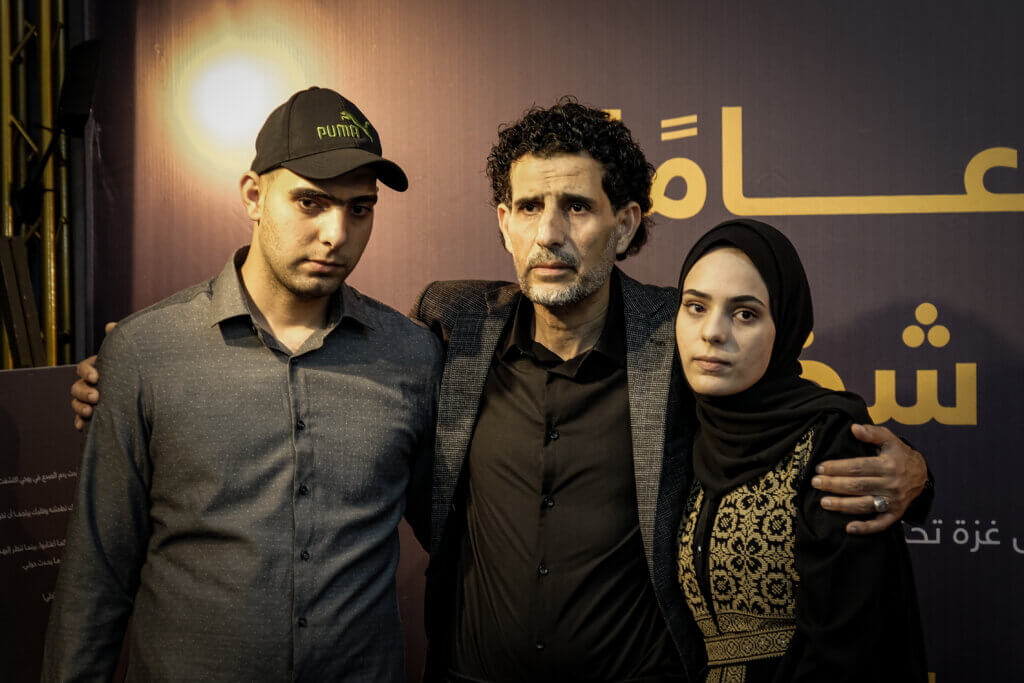
A frozen life
Zainab has not moved on from this horrible day. She relives the scenario of losing her family over and over again. Every day at 1:00 am she recalls the last moment that her family used to be together.
“I did not lose one or two of my family, I lost 22 people.”
Before the war, Zainab did not hold any family responsibilities, she only dedicated her time to her study and the new talent with art. “But after the war she she became like a mother, holding the responsibility of the rest of the family,” her father Shokri Al-Qolaq said.
“She becomes like a mother and a support for me,” Shokri says. “Zainab now holds overwhelming responsibilities but we support each other to endure this distress.”
Zainab considers herself now to be a surviving witness to the Israeli crimes against her family, and all Palestinians in Gaza. She wants to tell her story to the world.
“I survived to tell the story of Israeli aggression on my neighborhood and family. I tell my story through paintings as it is an international language everyone understands. I hope my story will be shared widely and internationally to show the reality of Israeli aggression against us,” she says.
Tareq S. Hajjaj
Tareq S. Hajjaj is the Mondoweiss Gaza Correspondent, and a member of Palestinian Writers Union. He studied English Literature at Al-Azhar university in Gaza. He started his career in journalism in 2015 working as news writer/translator at the local newspaper Donia al-Watan. He has reported for Elbadi, Middle East Eye, and Al Monitor. Follow him on Twitter at @Tareqshajjaj.
